People are creatures who ask where they came from, and museums carry an unbroken lineage of history and culture, telling the story of the moving years that existed in the long past.
This past 18 May was International Museum Day.
Founded in 1977 by the International Council of Museums, this festival explores thought-provoking themes each year.
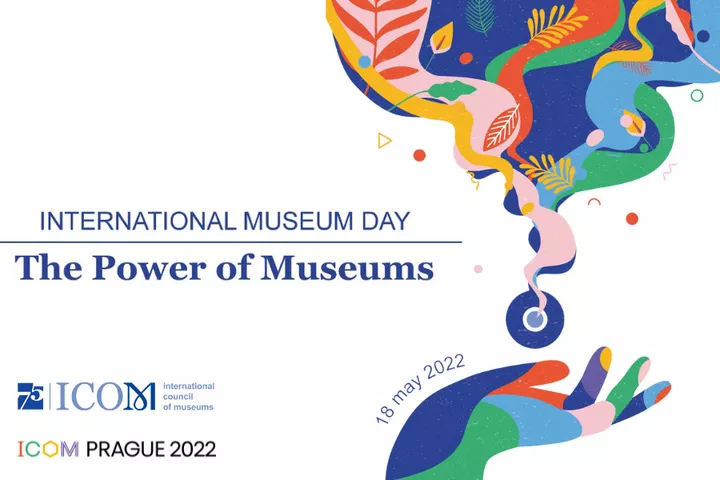
For International Museum Day 2022, the theme is "The Power of Museums" - museums have the power to change the world around us, they inform us about our past and open us up to new ideas to help us build a better future.
We might ask the question more specifically. In the beginning of everything, how can museums first allow more people to meet the artifacts?
The artifacts are tangible and immersive
This year, ICOM hopes to explore the power of museums through three lenses.
The power to achieve sustainable development, the power of digital and accessible innovation, the power to build communities through education.
Among other things, the power of digital makes museums more accessible and engaging, helping visitors understand complex and subtle concepts.
This year's May 18 also happens to be the third season of Google Arts & Culture's "Immersive Museum" online event series.
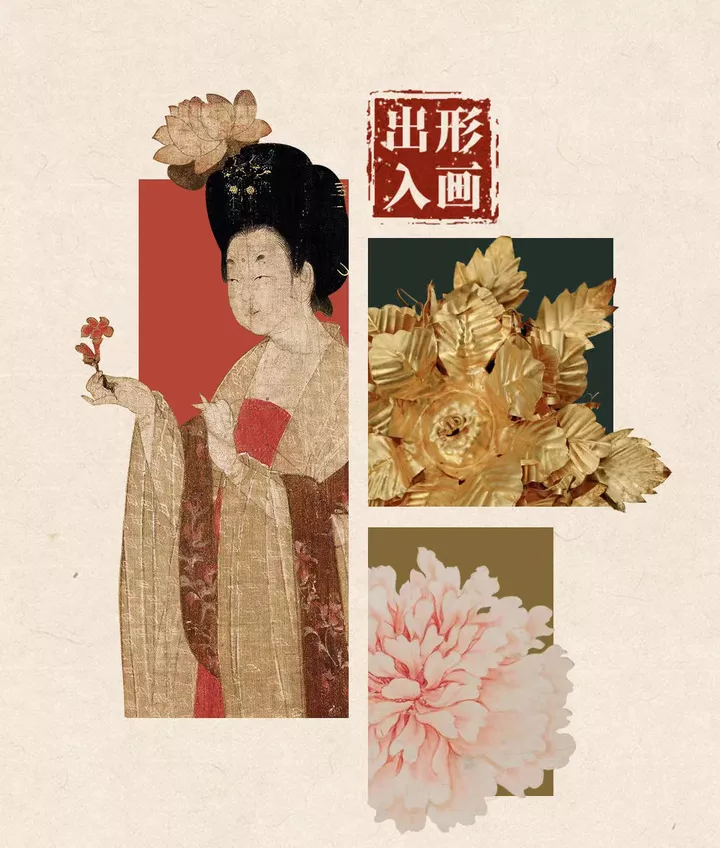
As the name implies, 'Immersive Museum' brings the 'museum-going' experience online, digitizing artifacts through technology and using a variety of techniques to reveal the extraordinary details and stories behind the collections.
At the Museum of Immersion, the spread of culture and art is no longer limited by geography, and valuable historical heritage becomes accessible.
This time, Google Art & Culture invited the Liaoning Provincial Museum, Hubei Provincial Museum and Hunan Provincial Museum to select treasures from their collections and extract unique shape elements from them to explore how artworks interpret shapes with different techniques and aesthetic concepts.
"The painting depicts six noblewomen and their attendants enjoying flowers in a garden in spring and summer, with their faces covered in lead powder, their eyebrows resembling cinnamon leaves, their buns and their sideburns covered in flowers.
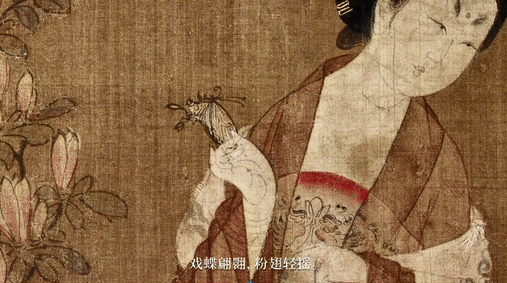
The golden flower pin at the Hubei Provincial Museum is the one that bloomed on the head of the princess Liang Zhuang six hundred years ago. The pattern of the petals emerged from a thousand strikes, depicting the "shape of a flourishing flower".
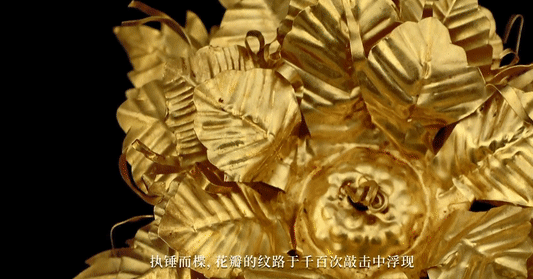
The scroll of "Painting of Peony with Herbaceous Insects" in the Hunan Provincial Museum is an alternative model of "the shape of the exuberant flower", in which the multiple layers of the petals are first outlined by the "boneless method" and then the "clashing powder method" is used to express the moist sense of color.
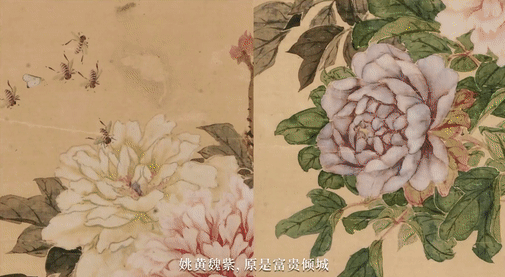
The moving images are accompanied by poetic explanatory words and simulated sound effects that tell the story and details of the artifacts for an immersive and innovative online art appreciation experience.
Culture changes, times change, what is eternal is the endless pursuit of beauty.
Museum Day, more than one day
The original purpose of establishing Museum Day was to call the world's attention to museums and culture and to promote the healthy development of museums worldwide.
Digitization, in which is a very important joint.
The Forbidden City has more than 1.8 million artifacts, and exhibition space is limited compared to the number of artifacts; the Mogao Caves in Dunhuang have 735 caves, which are difficult to completely measure with the energy of a visitor.
Force majeure factors such as the epidemic and unpredictable disasters such as the fire at Notre-Dame de Paris make the digitization of museums all the more urgent and necessary.

Google Arts & Culture now encompasses over 2,000 cultural institutions from more than 80 countries and regions, making more artifacts visible and known through ultra-high resolution imagery, 3D scanning, virtual reality, 360-degree panoramas and more.
The Hunan Provincial Museum and Hubei Provincial Museum, which are also partners of Google Arts & Culture, were unveiled at this Museum Day.
In 2014, the Hunan Provincial Museum, the first public museum on the mainland, partnered with Google Arts & Culture to bring online a total of 59 artifacts in high resolution, an online exhibition "History on a Bottle".
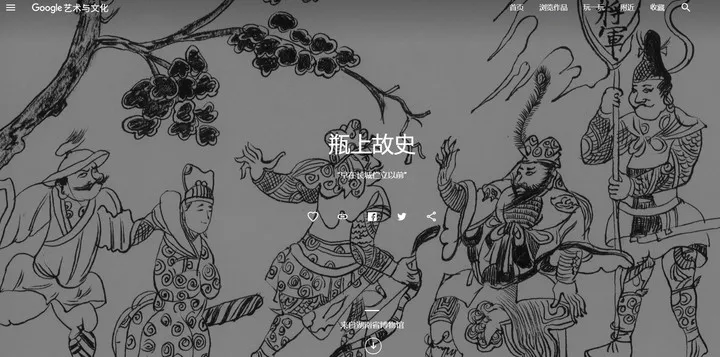
Since 2015, the Hubei Provincial Museum has had 214 high resolution images of cultural objects, 9 online exhibitions, and 2 360-degree panoramic images live on the Google Arts & Culture platform.
The digitization of museums does not only open up artifacts to all across time and geography, it also connects us to the history behind the artifacts and conveys what museums are supposed to be about - museum knowledge.
One of the online exhibitions at the Hubei Provincial Museum is a "billion-pixel" ultra-high-definition photograph of a lacquered inner coffin with dragon and phoenix motifs (https://artsandculture.google.com/story/DgUhSnUsR2l-LA?hl=zh-CN), which shows all the details of the lacquered coffin, from the paved head and ring to the dragon and phoenix motifs, in magnified form. The details of the lacquer coffin are clearly visible after enlargement.
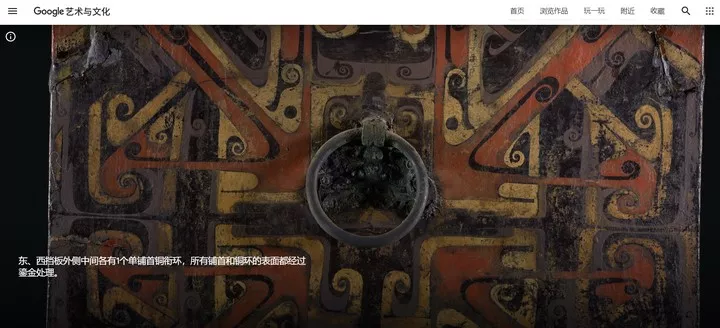
In addition to the visual shock, we were also able to learn that painted lacquer ware was a major artistic achievement of the Chu people, and that the warm and humid environment of the middle reaches of the Yangtze River was suitable for the growth of lacquer trees; the phoenix was a sacred bird worshipped by the Chu people, so there are many phoenix bird motifs on excavated artifacts from the Chu region.
Another online exhibition "Zeng Houyi - Bronze" of Hubei Provincial Museum not only introduces the excavation process of Zeng Houyi's tomb, but also introduces in an interactive form with illustrations, audio and video, a system of musical instruments, wine vessels, food vessels, weapons, and household utensils.
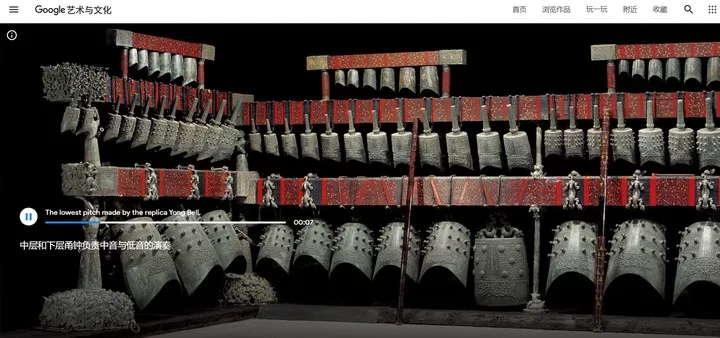
Wang Xianfu, deputy director of the Hubei Provincial Museum, told.
In the past, people only stayed in museums to see exhibitions or artifacts or to attend events, and the depth and breadth were much weaker. Because of the limited number of artifacts that have access to museums, a large number of artifacts do not make it to the museum galleries. The digital application of heritage has a much wider field and scope, we can directly through the Internet, closer access to more exhibits, more feel the charm of the collection, and more corresponding educational activities.
Google Art & Culture There are other ways of presenting art and culture, and curatorial thinking is not limited by individual museum collections, which is one of the benefits of digitizing museums.
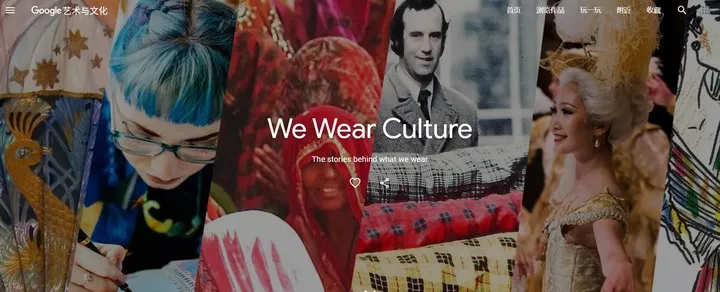
For example, the feature "We Wear Culture" explores the stories behind 'What We Wear', bringing together museum resources and curatorial creativity to scientifically It brings together museum resources and curatorial creativity to explore the origins of various crafts such as the Indian sari and St. Gallen embroidery, to explore the longstanding relationship between fashion and art, and also to extend the analysis of fashion's impact in the present.
Online and offline, complementing each other
According to cultural and blogging enthusiast Jiang Song, really object it has an "aura" and it has a historical message in it.
It's certainly nice to have digital, but we will always need physical museums to feel the pulse of history first hand.
The King Goujian Sword, known as the "World's First Sword", is one of the treasures of the Hubei Provincial Museum. The bronze sword has been buried for more than 2,500 years and was unearthed in a lacquered wooden scabbard with clear and rust-free decoration, and it still shines when it is sheathed.
On 20 December 2021, the new Hubei Provincial Museum, which has been under construction since 2016, opened with six new exhibitions, one of which is the 'Special Exhibition on the Sword of King Yue Goujian', which for the first time uses one gallery to display only one One of them is the "Special Exhibition on the Sword of King Yue Goujian", where for the first time only one artifact is displayed in one hall.
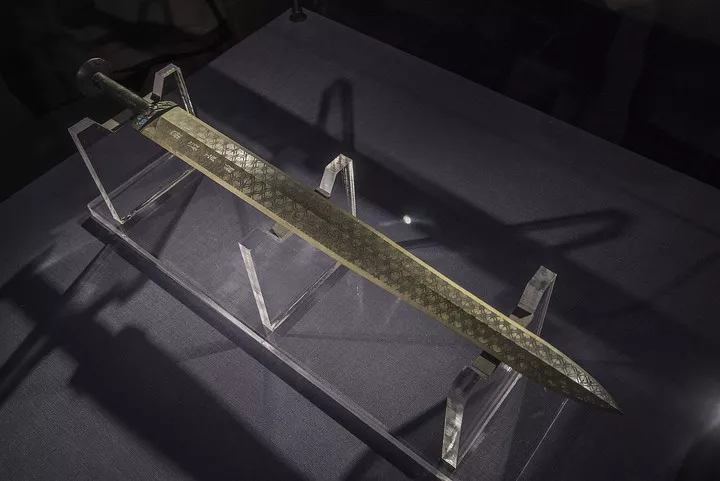
▲ King Yue Goujian Sword. Image from: wiki/Siyuwj
Wang Xianfu, deputy director of the Hubei Provincial Museum, told how putting this one relic and the story behind it together for display posed a new challenge for the Hubei Provincial Museum.
How it was excavated, how it came to be, and an analysis of its technological means will be put into this exhibition, especially the highly developed casting and decorative techniques associated with it at that time.
In addition to this, the Hubei Provincial Museum has incorporated more multimedia and interactive experiences in its galleries.
The exhibition "Heavenly Music - Early Musical Instruments Unearthed in Hubei" compares the early musical instruments excavated in Hubei and their derivation, witnessing the gobbling up, development and heyday of the ritual music culture. A blind walkway and an interactive area for the blind are also set aside, where blind visitors can personally strike the chimes and experience the technique of instrument casting.
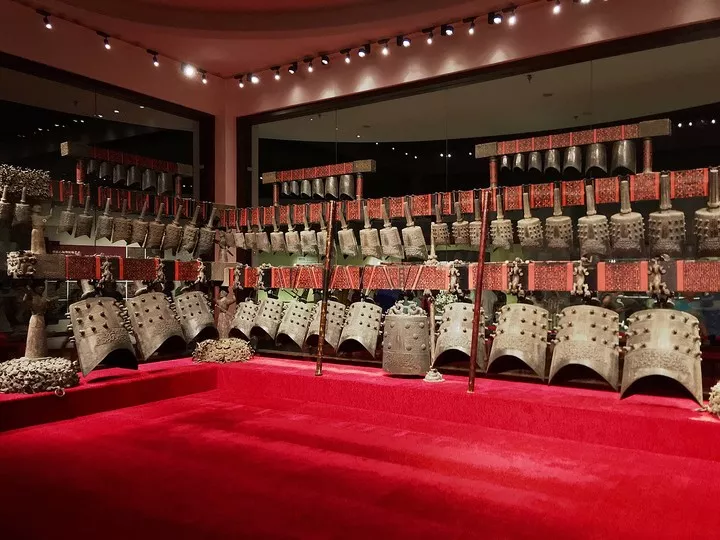
▲ Zenghouyi Chimes.
It's hard to feel this sense of history and humanity that has evolved with the times without being there.
Wang Xianfu believes that in the future, digital museums and physical museums should complement each other in the display of cultural relics and education for the public.
Physical museums are more intuitive and closer to the audience with their exhibits and physical artifacts. But the number of people who actually enter the museum will be reduced due to reservations, epidemics, distance, etc., and we can make up for it through digital museums. Especially in the past few years, digital museums have become more popular with audiences, and it has further expanded the reach and made young people enjoy museums and love our traditional culture.
The museum has long since ceased to be an exhibition through a glass, let alone a cultural interest from on high. What it has brought us is the opportunity and freedom to learn about all kinds of artifacts in all forms.